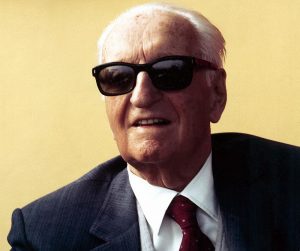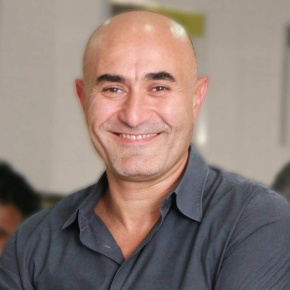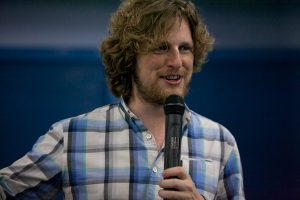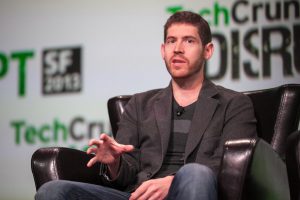Enzo Ferrari : The Founder of Ferrari Automotive Comapny
When we see through the life journey of the successful people, most of them did not have an easy life. The hurdles and struggles, they faced, made them strong and they kept working towards their dream. One such personality, Enzo Ferrari was the man who brought himself out of all the problems and controversies. He created history by putting his share in the world of car racing and manufacturing some of the fastest luxury sports cars.
Early Life
Enzo Ferrari was born as Enzo Anselmo Ferrari, to Alfredo and Adalgisa Ferrari, in Modena, Italy. He was born on 18 February 1898, but his birth certificate has recorded his birthday as on 20 May, since his father got stuck in a heavy snowstorm and the registration got delayed for two days. His father operated a workshop fabricating metal parts. He had an older brother named Alfredo Junior. In 1916, he lost his father and brother, due to a viral Italian flu. The death of his father and brother shattered him completely and he became responsible for his household.
During the world war 1, he joined the Italian Army and in 1917 and shoed mules for the 3rd Alpine Artillery Division. But, after suffering himself too with a flu pandemic in 1918, he was discharged from his service.
Racing Career
When Enzo was just 10 years old, his father took him and his elder brother to Bologna, to watch a race, where he was introduced to Felice Nazzaro. After watching a few races, he was certain that in future he will become a car racer. But, the death of his father and brother, made him leave his studies and focus on earning money for his family.
After his exit from his job, in the Italian Army, the struggle, for him, started again. He even went for a job interview at Fiat, but there too, he was rejected. Finally, he joined another smaller car making company named as Costruzioni Meccaniche Nazionali, in Milan. He was appointed as the test driver. After working for some time, he was promoted as a car race driver and he was back on the track to achieve his childhood dream.
Ferrari debuted as a car race driver in 1919 Parma-Poggio di Berceto Hillclimb race, followed by the Targa Florio in the same year. In 1920, he joined Alfa Romeo and won his first car race, in 1924, the Coppa Acerbo at Pescara. He was promoted and was offered many other prestigious races. But, after the death of a fellow racer, Antonio Ascari, in 1925, he lost his confidence and until 1927, he did not participate in any other car race.

In 1929, he founded a race team named as Scuderia Ferrari, that included the superstar drivers Giuseppe Campari and Tazio Nuvolari. In 1932, Ferrari decided to retire as a car race driver, influenced by the birth of his baby boy Alfredo. He now wanted to focus on the management of his racing team. His Scuderia Ferrari was shut down in 1937 and he resigned from Alfa Romeo in September 1939. The company relieved him from his job, after signing an agreement that stopped him from using the name Ferrari in any of his racing or car ventures for next four years.
Founding Ferrari
In the same year, he left Alfa Romeo and started his own company Auto Avio Costruzioni, in his hometown, Modena. In 1940, he manufactured two cars, that he used in the Mille Miglia, and driven by Alberto Ascari and Lotario Rangoni. Due to the effect of the world war 2, he had to move his venture from Modena to Maranello, in the same year.
After the end of the agreement with Alfa Romeo, in 1947, he founded Ferrari S.p.A. He mainly manufactured the racing cars, and in1948 formed his own racing team that debuted in the Turin. The team’s major victory was in the 1949 24 Hours of Le Mans, with a Ferrari 166M.
Since the beginning of his company till his death, Ferrari made several racing cars and participated in many races with his team. He saw many accidents leading the deaths of his drivers and faced controversies related to them. But, his team always supported him saying that the deaths were never caused due to any mechanical failure in the vehicle. By the year 1952-53, he also started manufacturing cars for roads.
There is another incident that is an important part of Enzo Ferrari’s life timeline. Known as the Great Walk Out, the incident took place when many of Ferrari’s engineers, managers, sales managers and other key figures left the company because of Ferrari’s stubborn behaviour. Although, many of them regretted their decision later.
In 1969, Fiat bought the 50% shares in Ferrari. However, Ferrari had the 100% control over the racing activities. The deal also included the lifetime subsidy for Enzo.
The Logo
Ferrari has been using the prancing horse emblem as its logo since he started manufacturing cars. The emblem was created by his close friend and the famous Italian fighter plane pilot Francesco Baracca. It is said that Baracca gave a necklace with the prancing horse to Ferrari, just before his last flight, in which he was shot dead by an Australian fighter plane in 1918. In the remembrance of his friend, Ferrari used the prancing horse emblem as the logo of his company.
Personal Life
Ferrari was married to Laura Dominica Garello and had a son with her. He named his son after his father’s name Alfredo. Unfortunately, Alfredo also died after suffering from ill-health in 1956. His another son Piero, from his mistress, is serving as the vice-president of the Ferrari and owns 10% shares of the company.
Ferrari died at the age of 90, in 1988. Before dying, he witnessed the launch of one of the greatest road cars of that time, the Ferrari F40. The news of his death was disclosed after two days, as requested by Ferrari himself, as a compensation of the late registration of his birth.

Yashica is a Software Engineer turned Content Writer, who loves to write on social causes and expertise in writing technical stuff. She loves to watch movies and explore new places. She believes that you need to live once before you die. So experimenting with her life and career choices, she is trying to live her life to the fullest.





